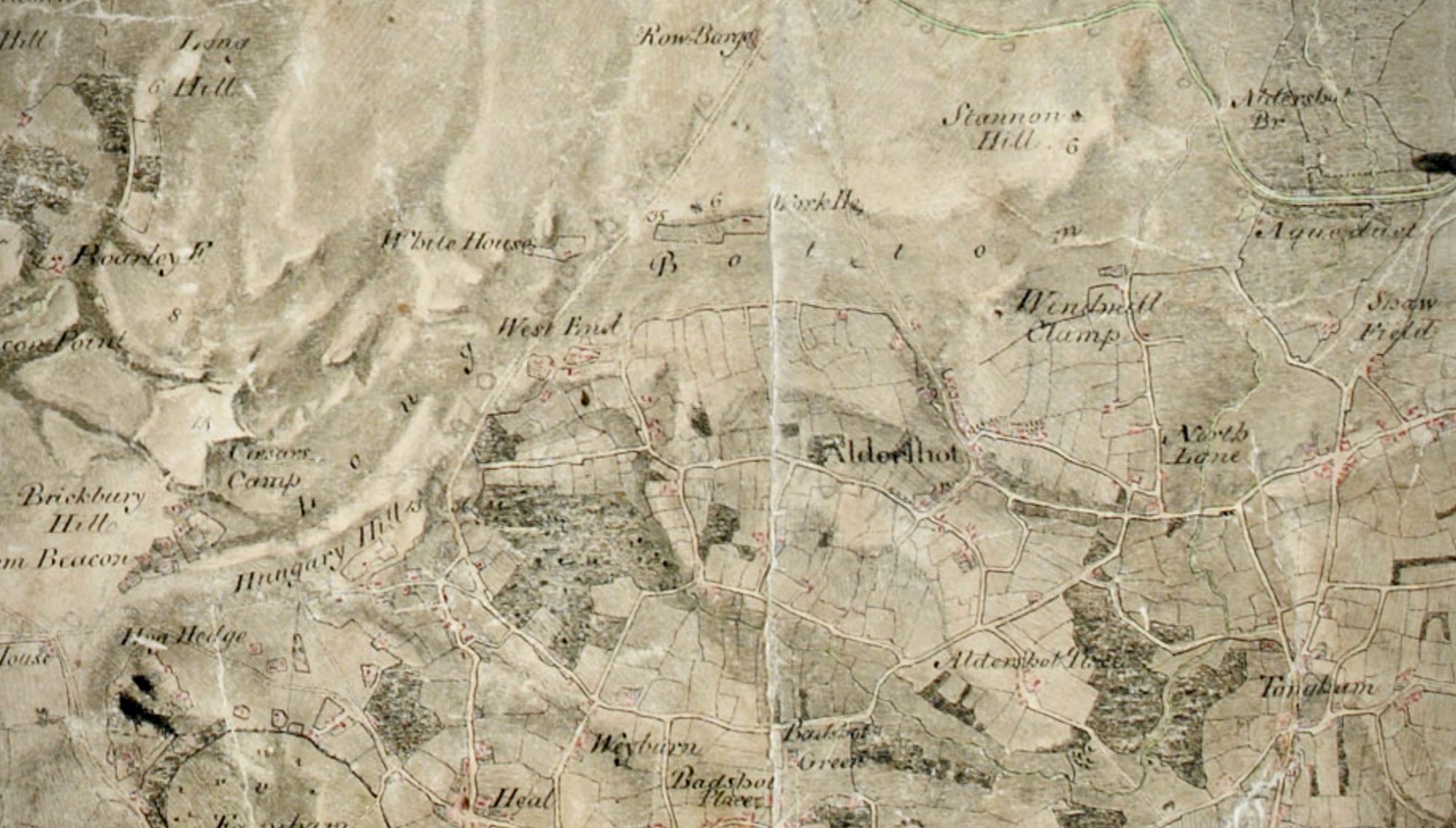The advertisement placed on Samuel Eggar’s behalf in the Hampshire Chronicle in June 1851 stated: “The whole of the Manorial rights of the Manor of Aldershott, including Sporting, Pasturage for Cattle, and also cutting Peat and Turf, belong to the Farm.”
Twenty years before, advertisement had been placed in the London Evening Standard in June 1831 for the sale of the ‘Aldershot Halimote Manor House’ and ‘115 acres of rich land’. It had contained the following bold and sweeping statement:
“Manor of Aldershot Halimote, with all its manorial rights, privileges, and immunities, a court is held, various quit rents receivable, and there is the power to appoint a gamekeeper. The manor extends over 3,000 acres of fine sporting country, abounding with game, and there are three packs of fox hounds in the neighbourhood.”
In the event, the advertisement did not result in a sale. It had been placed by John Eggar, Samuel’s older brother. John Eggar had become a dominant figure in Aldershot having inherited the estate of the ‘Halimote Manor of Aldershot’ from his uncle, Thomas Buddle in 1808.
-
- In 1808, the willl of Thomas Buddle of Farnham stated “All my Halimote Manor of Aldershot, and messuages tenements and farms in Aldershot copyhold of the manor of Crondall to John Eggar of Runvale [Runfold].”
The term Halimote can be traced back to the Crondall Customary of 1567. At that date, the man holding the largest extent of the 888 acres of copyhold properties in Aldershot was John Faunteleroy. He held 63 and a half (‘half a hide’) acre estate on which the ‘Manor House’ is located plus other plots of land occupied by seven ‘halimote tenants’. (Two others in Aldershot also had ‘halimote’ sub-tenants: Katherine Cowper and William Aparke.)
-
- John White, Knight and Freeholder, held what became known as Aldershot Park.
Whether and how the rights and authority of the ‘Halimote Manor of Aldershot’ were exercised over the subsequent owners of the copyholders is unclear. They descended to Thomas Buddle and then his nephew, John Eggar, eventually passing to another nephew, Samuel Eggar.
-
- What is strange is how Samuel Eggar had claim to the whatever rights were due to the ‘Aldershot Manor Halimote’. John Eggar had sold ‘Manor House’ estate which had originally been bought by Buddle. What John had passed to his brother Samuel was the residual part comprising Riley’s Farm and Legg’s, both of which had been bought by Buddle after he had bought the ‘Aldershot Halimote Manor estate’.
It therefore remains unclear what rights, such as exclusive sporting rights, were attached to the Manor Halimote. No convincing evidence is found that the Government would have been obliged to regard any of this having had monetary value in their purchase of Aldershot Common.
